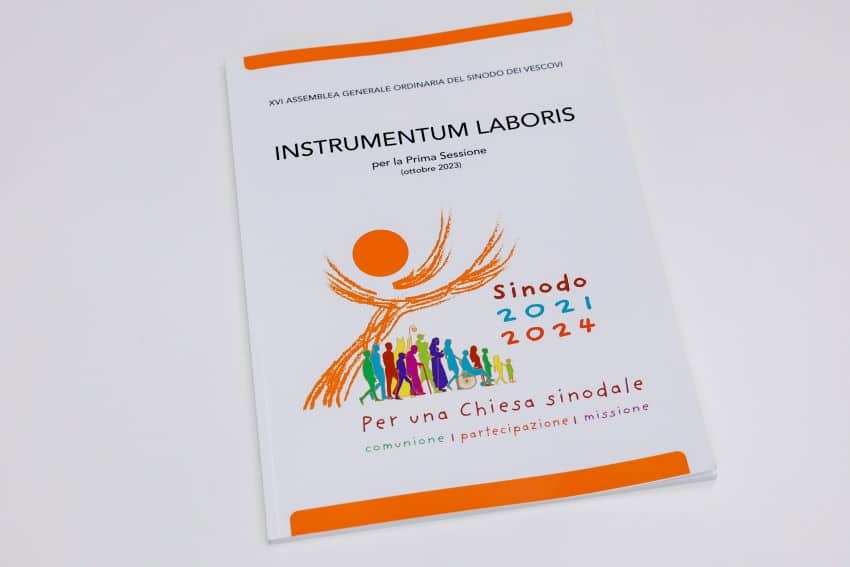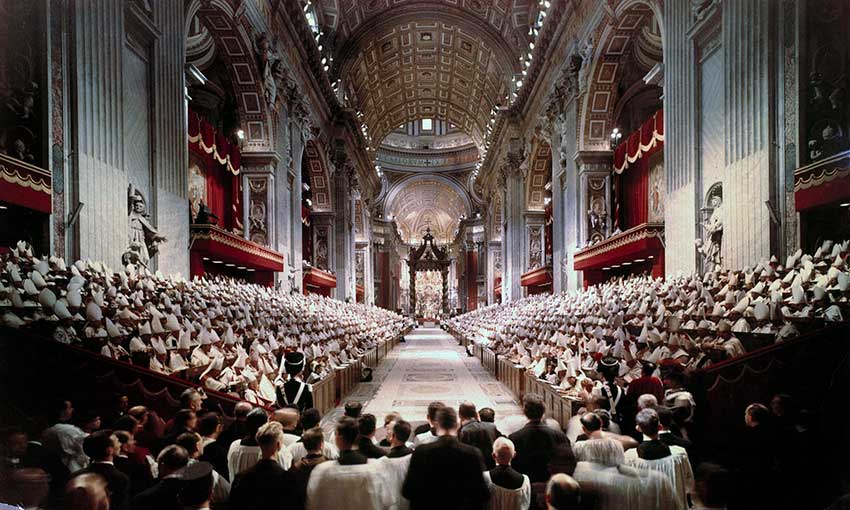
I was not surprised by George Weigel’s continuing criticism of Pope Francis and the coming Synod of Bishops (The Catholic Weekly, 9 July, 2023). I was surprised that his discussion of Vatican II’s central document Lumen Gentium ignored one of its most striking features. Yes, as Weigel says, the document begins by affirming the church’s mission to proclaim the Gospel, the Light of Christ, to all people.
To this end, the council said, “the church is in Christ like a sacrament.” Lumen Gentium then set out to “unfold more fully to the faithful of the Church and to the whole world its own inner nature and universal mission” (LG 1). Subsequent chapters explore key aspects of the church’s “inner nature”—beginning, most notably, with the church as the People of God (Ch 2). Only in the following chapter does the council examine “the hierarchical structure of the church” and in particular the episcopate (Ch 3).
I have no special access to the mind of Pope Francis, but it has seemed clear for a long time that he is dedicated to implementing the full vision of the council. His emphasis on the importance of synodality in the life of the church will give effect to Vatican II’s teaching that through baptism all believers are called to holiness as members of one people “established by Christ as a communion of life, charity and truth” and “sent forth into the whole world as the light of the world and the salt of the earth” (LG 9).
This teaching, surely, is the foundation for the opening words of the working document (IL) for the synod now in progress: “The People of God have been on the move since Pope Francis convened the whole Church in Synod in October 2021 … starting with the basic question… ‘How does this ‘journeying together’… allow the church to proclaim the Gospel in accordance with the mission entrusted to Her; and what steps does the Spirit invite us to take in order to grow as a synodal church?” (IL 1),
Like some others, I was initially puzzled by the idea of a synod about synodality, which sounds like a meeting about having a meeting! Should we not first agree on the agenda for the meeting? Otherwise, why have one at all? On reflection, however, I realised that when people meet they need to be of one mind about the nature of the meeting, its ground rules. If the church is to have a meeting, what kind of meeting should it be, and who should attend? Until recently, it would have been a meeting only of bishops, and indeed was typically a meeting well and truly controlled in advance by the Vatican curia.
Famously, when Vatican II began in 1962, the curia had already drafted the final documents! (That’s why our own Cardinal Gilroy thought the council would be over by Christmas.) Providentially, enough bishops protested, and a wholesale re-write was ordered with new drafting groups. Two years later Lumen Gentium (The Light of the Nations) was promulgated as the Dogmatic Constitution on the Church – the most solemn form of Conciliar teaching – its chapters organised to remind us to think first of the People of God, and only then of the hierarchy.
It follows that when the church has a meeting, it does so as a People of God who are hierarchically structured through the ministry and service of the ordained, whose role is to nurture the constant growth of the People of God (LG 18). We need a synod about synodality because we need to discover (for the first time?) how to meet as the kind of church that Christ founded. This is clearly a new stage in the life of the church; it’s not business as usual for so many centuries. A synodal church cannot be separated from the college of bishops gathered around the Bishop of Rome; nor can a Synod of Bishops function in isolation from the baptised People of God. Contrary to the headline above George Weigel’s Catholic Weekly column (“Is synod 2023 a reversal of Vatican II?”), the coming synod is intended to help us implement the full teaching of Vatican II on the “inner nature” and mission of the church.

Unsurprisingly, Weigel pays scant attention to the content of the synod working document. Part A outlines the “characteristic signs of a synodal church”—which is a guide to the kind of meeting we should have if we are to meet as a church, and not as a bureaucracy, or a parliament, or like any other secular model. Part B identifies the three key themes: communion, mission, participation which should mark the way we live and work together as church. The theme of communion reminds us how disunity and division within the church sabotage its mission. Sadly, disunity and division is being fostered today by various groups in the church, especially in the USA.
No pope should be beyond criticism, but the vitriol directed against Pope Francis is remarkable (and would not have been tolerated by St John Paul II). Francis has said he likes “a messy church”—most of us, I suspect, would prefer less mess. My hunch is that Francis knows there is no point in telling people not to think or say certain things; they will anyway. So let’s allow the disagreements to be played out, and trust the Holy Spirit to help us find a way forward.
That’s why the spirituality of listening and discernment is crucial to the way we ought to meet as a church. Our own Plenary Council achieved more unity in the end than would have been predicted by competing voices at the outset. As Francis commonly notes, time is greater than space: in time, the truth will become clear to all, even if for now the truth is “frozen” and fragmented across different places. Let’s wait and see how the adventurous musings of the German church’s synod may be tempered by the universal church’s listening and discernment.
What is most disappointing about the claims by many critics of Francis is that they show little sign of being open to what they might learn from him, open to what new insights God might be offering us through this man’s teaching and pastoral priorities, noting that his teaching is thoroughly grounded in the teachings of episcopal conferences and the previous Synods of Bishops (just check the footnotes).
To be open to papal and conciliar teaching is an obligation upon all Catholics: obsequium religiosum is the technical term—which is hard to translate into English; “religious allegiance” is the best I know. At the end of the day, despite trying to be open to the teaching of bishops or councils, a person might remain unconvinced, but allegiance and openness should endure. Those of us who have lived through four or five different pontificates have regularly been challenged to remain open to decisions and approaches we did not agree with. That’s part of what being a member of the People of God involves.
The synod’s working document is available on the Vatican website for all to read—I doubt you will come away with the negative message promoted by George Weigel.
